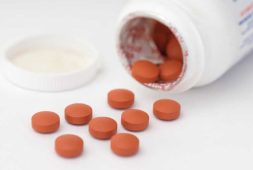
Phase 1 of a clinical trial to prevent HIV has used an experimental vaccine to prime the immune system in a one-of-a-kind way.
The results, which have shown very favorable results, was announced the International AIDS Vaccine Initiative (IAVI) and Scripps Research last February. They explained that the vaccine has shown success in ‘stimulating production of rare immune cells needed to generate antibodies against the fast-mutating virus.’ And the results showed a targeted response in at least 97% of the trial participants that were given the vaccine.
Professor and immunologist at Scripps Research, William Schief, Ph.D. who is also the executive director of vaccine design at IAVI’s Neutralizing Antibody Center – which is the lab where the vaccine was developed – explained, “We showed that vaccines can be designed to stimulate rare immune cells with humans.”
He added, “We believe this approach will be key to making an HIV vaccine and possibly important for making vaccines against other pathogens.”
To move forward, IAVI and Scripps have chosen to partner with the biotechnology company Moderna, in order to develop and test an mRNA-based vaccine. This technology ‘harnesses the approach to produce the same beneficial immune cells.’ By using mRNA technology, the chances of substantially expediting the HIV vaccine development is much faster.
According to Hiv.gov, in 2019 alone, there was around 38 million people living with HIV/AIDS globally. Of that number, 36.2 are adults while the remaining 1.8 million are children aged 15 and below. It is also one of the hardest viruses to be wiped out through a vaccine, mostly because it continues to change and evolve into various strains, allowing it to bypass or circumvent the immune system.
President and CEO of IAVI, Mark Feinberg, MD., Ph.D. shares, “These exciting findings emerge from remarkably creative, innovative science and are a testament to research team’s talent, dedication and collaborative spirit, and to the generosity of the trial participants.”
It’s One In a Million
Since the first mention of AIDS by the CDC in September of 1982, HIV researchers have been on the chase for decades in their attempt to try and find a way to stimulate the immune system in creating antibodies – regardless how rare – that have the ability to neutralize the everchanging strains of HIV. What are known as “broadly neutralizing antibodies” or bnAbs, which are specialized blood proteins that could possibly attach to HIV spikes, are proteins on the virion surface which allow the virus to penetrate humans cells and disable them through ‘important yet difficult-to-access regions that don’t very much from strain to strain.’
According to Dr. Shief, “We and others postulated many years ago that in order to induce bnAbs, you must start the process by triggering the right B cells—cells that have special properties giving them potential to develop into bnAb-secreting cells.”
“In this trial, the targeted cells were only about one in a million of all naïve B cells. To get the right antibody response, we first need to prime the right B cells. The data from this trial affirms the ability of the vaccine immunogen to do this,” he adds.
He also says that the first step would be the beginning stage of what would be a ‘multi-step vaccine regimen,’ which aims to evoke a variety of bnAbs.
Promises of Beyond HIV
The strategy being used is to target the naïve B cells with particular properties and it’s ‘called “germline-targeting,” ‘as these young B cells display antibodies encoded by unmutated, or “germline” genes.’ What researchers believe is that this approach could be used when attempting to work with other such difficult or formidable pathogens such as dengue, Zika, influenza, malaria and hepatitis C viruses.
Professor and chair of the Department of Immunology and Microbiology at Scripps Research and scientific director of the IAVI Neutralizing Antibody Center, as well as director of the NIH Consortium for HIV/AIDS Vaccine Development, Dennis Burton, Ph.D., explains, “This is a tremendous achievement for vaccine science as a whole.”
“This clinical trial has shown that we can drive immune responses in predictable ways to make new and better vaccines, and not just for HIV. We believe this type of vaccine engineering can be applied more broadly, bringing about a new day in vaccinology,” he adds.
The IAVI GOO1 clinical trial was done in two sites, the George Washington University in Washington, D.C. and the Fred Hutchinson Cancer Research Center in Seattle. There were 48 healthy adult volunteers that participated who were given either a placebo or two doses of the vaccine compound known as eOD-GT8 60mer, as well as an adjuvant that was developed by the pharmaceutical company GSK.
According to McElrath, “This is a landmark study in the HIV vaccine field, demonstrating success in the first step of a pathway to induce broad neutralizing antibodies against HIV-1.”
This study also paves the way for other clinical trials that hope to refine the broaden the approach in order to achieve the long-term goal of producing a safe and effective vaccine against HIV.
Through the Collaboration for AIDS Vaccine Discovery, funding from the Bill & Melinda Gate Foundation, as well as grants from the National Institute of Allergy and Infectious Diseases (NIAID), are all working together as a network of partners to contribute and support the development of the vaccine. This also includes such companies as the NIH Vaccine Research Center, the US Agency for International Development and the government of the Netherlands.



